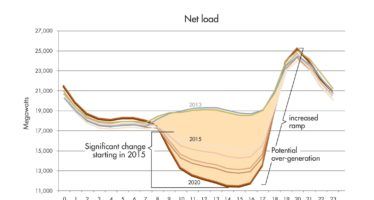Rose Parade runs over taxpayers
By John Hrabe
The world didn’t end in 2012, but several municipalities did.
Four California cities, Stockton, Atwater, San Bernardino and Mammoth Lakes, declared bankruptcy this year. One financial expert described the problem as “spreading like a disease.” Of course, these bankruptcies were caused, in part, by wasteful government spending.
Don’t expect the threat of municipal bankruptcy to rain on every city’s parade.
Twenty-seven percent of the floats in next week’s 124th Pasadena Tournament of Roses Parade will be sponsored by a government agency. In many cases, taxpayers directly foot the bill to design and build these elaborate floats. Even responsible cities that rely on donations and corporate sponsorships rack up thousands of dollars in indirect taxpayer expenses.
In addition to two public universities, the 2013 Rose Parade will feature floats from the cities of Alhambra, Burbank, Downey, Glendale, La Canada-Flintridge, Los Angeles, San Gabriel and South Pasadena. The long tradition of city-sponsored parade floats takes all year and thousands of dollars to prepare for just a few seconds of global publicity.
“The Rose Parade’s elaborate floats have come a long way since the Tournament’s early days,” the Rose Parade boasts on its website. “Today, float building is a multi-million dollar business and float construction begins just after the previous year’s Parade is over.”
Taxpayers pay for award-winning floats
The city of Glendale started planning for the 2013 parade in March, when the city council approved a $100,000 contract with the award-winning Phoenix Decorating Company to design and build the city’s 2013 float. Appropriately themed, “Living the Good Life,” the city fronted the cash with the hope that public donations and corporate sponsorships would backfill the public treasury. By late July, city staff had secured just $60,000 in sponsorships.
Glendale, like so many cities, was seeking just a few minutes of international publicity.
“If you ever tried to spot the Glendale Rose Parade float on television on New Year’s Day, you know you had to stay glued to your set and never blink,” wrote Glendale News Press columnist Ron Kaye. “You only get a passing glance.”
Just a few miles away, a unanimous Alhambra city council approved a $95,000 contract with the Alhambra Chamber of Commerce to oversee the construction and decoration of the 2013 float, according to council minutes.
While Glendale and Alhambra held public council votes on their Rose Parade floats, other cities provided contributions toward float building through the city’s parks and recreation department. This fiscal year, the city of Burbank allocated $54,720 in a direct cash contribution for the parade from its Parks, Recreation and Community Services Department. Drew Sugars, Burbank’s public information officer, is quick to point out that this year’s contribution is about 10 percent less than last year’s. Just two years ago, Burbank allocated $71,310 in direct taxpayer funds for the city’s float.
In-kind expenses: “A bit more complicated”
“Tracking in-kind costs can be a bit more complicated,” Sugars explained.
According to a 2011 city memo, which Sugars provided to CalWatchdog.com, the city’s cash contribution is supplemented by other city expenses for “essential staffing, storage, transportation, related mechanical expenses and miscellaneous expenses.” For example, city employees devoted staff time to train parade volunteers in how to operate a forklift. Additionally, it cost the city $55,000 to warehouse the float. In the 2010-11 fiscal year, the city estimated its “total cost of support” for the Burbank Tournament of Roses Association was $157,374.12.
City staff concluded that the bill was too much for taxpayers to bear.
“As the PRCS Department priorities core programs and services during the FY 2011-2012 Budget process, it recommends the elimination of the City’s $60,800 cash contribution to BTORA,” the city memo stated. Yet, the council declined to follow staff’s recommendation.
Even if some cities wanted to reduce their parade subsidies, not all indirect city subsidies are easily rescinded. In 1995, the city of Downey entered into a 25-year lease agreement with the Downey Rose Float Association. The city provided this benefit, according to the contract, for nothing more than “the favorable publicity from being represented in the annual Rose Parade.”
South Pasadena Float Association: Tax troubles
The cities’ direct and indirect contribution to these non-profit organizations often comes with minimal oversight or accountability. According to the IRS, the South Pasadena Tournament of Roses Association had its federal tax exemption “automatically revoked for its failure to file a Form 990-series return or notice for three consecutive years.”
Ted Shaw, president of the South Pasadena Tournament of Roses Association, said that he was working with the IRS to retroactively correct the organization’s filing requirements.
“We have reapplied to the IRS with a retro date to May 11th and have been advised once the fees are paid there will be no problem,” Shaw told CalWatchdog.com. “We are a small solely volunteer organization committed to building a float for our community once a year.”
Yet, the delinquent federal tax return didn’t stop the city from making its annual contribution. Sally Kilby, the city clerk of South Pasadena, said the city contributed $14,500 in business improvement tax funds for the annual Rose Parade float.
“The funds do not come from the General Fund (city), but from business improvement tax funds,” Kilby said. “These monies are collected from the business license tax on all businesses.”
Thousands of dollars: For what?
While South Pasadena dedicates business improvement taxes toward parade expenses, not all small businesses see an improvement in their bottom line from the parade.
“Amber Szabo, manager of the Old Pasadena store Lather, which specializes in skin and beauty supplies, said the store always closes for the Rose Parade day, as do many others on the route,” the Los Angeles Times reported last January.
Businesses may not benefit, but city officials do. San Gabriel Mayor Kevin Sawkins, who also chairs the city’s centennial committee, will be one of the float’s six lucky riders. According to the Los Angeles Times’ Rosanna Xia, “The float, which will cost an estimated $155,000 and is being funded by donations from local businesses and residents, captures the city’s historic roots as well as its evolution.”
Rose Parade: History of taxpayer subsidies
Taxpayers may grumble, but city subsidies are a founding principle of the Rose Parade, which began as a publicity stunt for California cities.
“Back in 1890, the city of Pasadena wanted to showcase how their winter was soooo much better than yours,” reports Cracked.com. “And in 1890, there were only two ways to accomplish that: by commissioning an artist to paint scenes of local wintertime fun and then just nonchalantly leaving the paintings all around the country, or by holding a festival. Pasadena went with the second one.”
The Los Angeles International Airport, the agency representing the city of Los Angeles in this year’s parade, told the Los Angeles Daily News that “no taxpayer funds were used to pay for the float.” In 2011, the City of La Canada-Flintridge provided at least $10,000 in taxpayer funds to the city’s non-profit float association. However, current year expenses were unavailable.
Related Articles
Pensions Before The Poor!
FEB. 28, 2011 By TROY ANDERSON For years, officials in California have used accounting gimmicks, stimulus funds and the state
Audit reveals ‘serious and pervasive deficiencies’ in West Covina
A scathing audit by state Controller Betty T. Yee has found “serious and pervasive deficiencies” in the city of West
Will Warren Buffett’s hydro prevent CA electricity crisis? — Part 2
This is Part 2 of a two-part series. Part 1 is here. In Part 1 of this series, I reported





